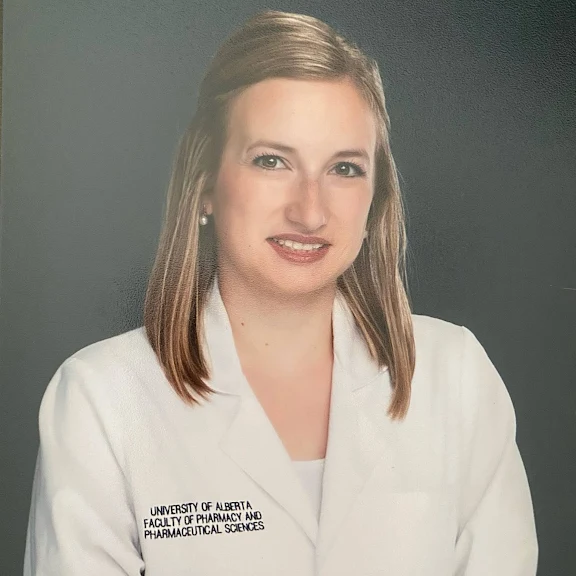PhD student Danielle Nagy’s research looks at issues of health equity for rural patients with diabetes
28 November 2022

Danielle Nagy. Image supplied.
Danielle Nagy is a third-year PhD student in the Faculty of Pharmacy and Pharmaceutical Sciences at the University of Alberta. Her research looks at how older drugs are still being used to treat people with Type 2 diabetes who live in rural areas, and raises questions of health equity for rural patients. We caught up with Danielle during Diabetes Awareness Month to find out more.
What is your research project?
Broadly, my research focuses on the intersectionality of process of care and location of residence in a population of adults newly diagnosed with Type 2 diabetes in Alberta. We used pharmacy prescription dispensations over a 10-year period as a proxy for prescribing practices and clinical decision-making. Our objective was to describe trends of using an older drug class, sulfonylureas, at an individual’s first treatment intensification instance. While we observed 46 per cent of individuals being prescribed a sulfonylurea at their first treatment intensification (out of 66,000 individuals) early in this research, we also observed a signal that the trends of sulfonylurea use differ by location.
Although overall, sulfonylurea use declined across the province in all locations, we observed a four-year delay in this decline in rural areas. This means that an older drug class continued to be used by patients in rural Alberta when their urban and metropolitan counterparts were receiving newer drug classes. Our multivariable logistic regression analysis showed that the odds of a rural dwelling individual receiving sulfonylurea treatment at first treatment intensification is 1.34 (95 per cent CI: 1.29-1.39) compared to someone living in a metropolitan city. While this research is exploratory, our results are concerning and raises questions of health equity.
What impact will your research make in treating diabetes?
In general, I believe that my research has begun to shed light on rural health-care challenges beyond infrastructure and opens the door to further explore process-of-care differences along the rural-urban continuum. I think both clinicians and policy-makers tend to think about health equity in terms of access to hospitals, specialists, and health technologies. And while these are certainly barriers to receiving health care, my research adds another layer of assessing an individual’s quality of care. It shouldn’t matter where an individual lives when they seek health care; the clinical decisions made throughout their care should be of the same quality, regardless of living in a rural, urban, or metropolitan area.
With respect to diabetes, I have received feedback that my results are surprising. Clinicians are surprised that older drug classes such as sulfonylureas continue to be used at such high rates, especially in rural areas. I think this creates space for reflection on our clinical decision-making and motivation to provide the highest quality care, even if prescribing and dispensing novel drug therapies pushes us out of our comfort zone.
What inspired you to choose diabetes as a research stream?
My interest in studying diabetes began when I was an undergraduate pharmacy student. I found this chronic disease fascinating as I had little to no personal or clinical experience in this area. Everything I was learning was new and exciting and I had little to no personal bias which I believe really helped me to better absorb what I was learning and generate research questions.
Where do you hope to see diabetes research in the next 10 years?
I recently had the opportunity to attend the Diabetes Canada/CSEM Professional Conference in Calgary this month which opened my eyes to both how far we’ve come in diabetes research, and how much farther we must go. One takeaway I have from this conference that is directly applicable to my research is that while we must continue to develop novel drug therapies and technologies, we must equally determine how best to translate this knowledge to patients and clinicians in order to see improved health outcomes. My next research project is aimed at uncovering barriers to guideline concordant management of Type 2 diabetes. I hypothesize that there will be differences along the rural-urban continuum with respect to how clinicians learn about new therapies and interact with newly published research.